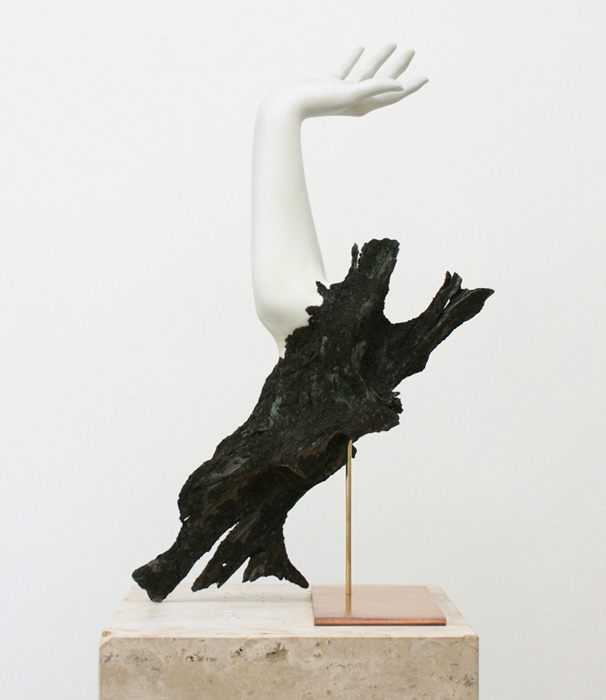Benjamin Huseby’s Apolitical Exhibition

IMAGES COURTESY OF DON’T PROJECTS
For his current exhibition at Paris’s Don’t Projects gallery, Benjamin Alexander Huseby photographed performers during their down time. The surprising intimacy and informality of the photos reflects Huseby’s own working life. A successful fashion photographer, Huseby is comfortable on that stage, but more intrigued by artistic experimentation. “In this show, specifically, I would say I approach glamour and gender from the opposite side of how one would in a fashion story,” he says. “But I doubt I would ever be able to give either up. I hope hovering between [the fashion and art worlds] gives me a unique perspective on both worlds and less confined by their inherent politics.”
The problem with those politics, of course, is that they too often get in the way of the actual work, which is the only thing Huseby really cares about. “Outside my assignment work, I never take photographs for a specific purpose in mind or within a theme,” he admits. “[Since] I photograph all the time…” So rather than creating a specific body of images with the exhibition in mind, he says, “Most of these images were taken in a very casual way, from hanging out and saying, ‘Hey, let’s take some pictures.'”
This loose, collaborative approach is reflected in the exhibition itself, which includes contributions from several of the performers photographed for the exhibition. Drag performer Jonny Woo has created one of several live shows that will occur during the exhibition, and Rein Vollenga has created a gestural sculpture of an outstretched hand that reflects the movements in the photographs. In addition to being placed on the walls, the highly varied black and white and color photographs have also been mounted on temporary drywall, with mirrors scattered around the room refracting and breaking up the work. The effect creates an impression that is far more dynamic and vibrant than a typical photography exhibition.
“When editing the works for this show certain reoccurring elements became obvious,” Huseby says. “Gestures, hands, movements and poses kept reappearing and then I started seeing formal qualities that connected the images, like graphic forms, light and shadows, play with colors. So if the work is about anything, I would say it may be about visualizing energy.” That energy reflects the spirit of the performers, and in the end, of the photographer himself. As Huseby says, “I guess everyone acts when they are being photographed, so there are no real uncaught moments, which so often is heralded as the ‘truth’ in photography. But I don’t believe in purity–just energy.”






